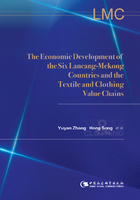
1.General rules of development for the textile and clothing value chains
The textile and clothing industry has long been a traditional labour-intensive industry that is vital to people’s livelihoods. Pursuing the industry is the best choice for most developing countries on their way towards industrialisation, providing a stepping-stone for their integration into the world economy and their economic take-off.
International experience suggests that the development of the textile and clothing industry is closely linked to a country’s economic development stage. When the real GDP per capita of a country and region is less than USD 3,000/4,000 (low-income economies), the textile and clothing industry enters a golden period, with considerable space for growth and potential for further rapid expansion. When the real GDP per capita is between USD 4,000 and 10,000 (upper-middle-income economies), the textile and clothing industry is at a mature stage as technology, capital, innovation and other factors become more important competitive advantages. For developed economies, the textile and clothing industry will decline sharply in production scale as imports increase, relying more on branding, marketing, designing, R&D and other high value-added stages. The LM countries are all developing countries. Laos, Vietnam, Cambodia and Myanmar all have a GDP per capita of less than USD 3,000, which puts them in the stage of accelerating textile and clothing development with significant potential and momentum, as the industry plays an irreplaceable role in promoting economic growth and accelerating industrialisation. China and Thailand are among the upper-middle-income countries. Since the growth rate of the labour-intensive clothing industry in both countries has begun to slow down, and their global share has declined, the two countries have focused on the capital-and technology-intensive textile industry and moved into high value-added areas such as branding and designing. Nevertheless, the textile and clothing industry still plays an important role in the economic development of both countries.